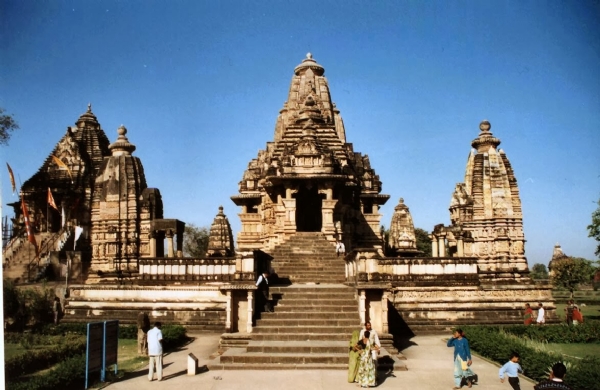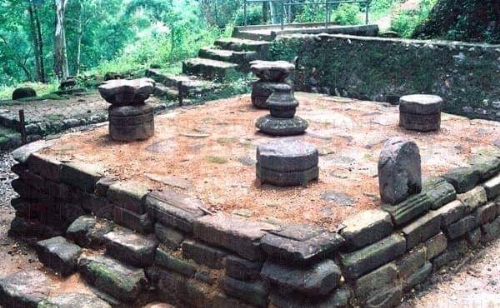Malinithan: A significant archaeological and historical site that consists of ruins of a Hindu temple
The site got its name from a legend about Lord Krishna and Goddess Parvati, as Krishna was mesmerised by flowers" fragrance presented by Parvati & hence called her Sucharu Malini.
Total Views |
Arunachal Pradesh is undoubtedly one of the most beautiful locations in India. The snow and the structures only add to the endless beauty of the stunning state. One such structure we will explore today, is of immense archaeological & mythological prominence here. Malinithan is a protected site and consists of ruins of a Hindu Temple of the early medieval period, hence being archaeologically important. Located at the foothills of Siang mountains, it is near the gorgeous town of Likabali in Arunachal Pradesh.


On receiving the news of Rukmini's proposed marriage to Shishupal against her will, Krishna went to Bhismaknagar; and him and Rukmini eloped. On their way from Bhismaknagar to Dwarka, they are believed to have rested in this place with a beautiful garden where Lord Shiva and Parvati were spending some time together. Shiva and Parvati greeted them with a warm welcome and garlands made of beautiful flowers of their garden. Krishna was mesmerised by the eternal fragrance of the flowers, and addressed Parvati as "Sucharu Malini”. This means a lady who strings garlands beautifully. Hence, the site came to be known as Malinithan. from Malini to Malinithan being the name.
A grand new replica of the ruined temple has been recently constructed at Malinithan. The idol of the main deity has been shifted to the new temple. Though being an archaeological site, the place has a strong historical connection with Hindu Gods.
This holy place of worship is visited by a huge number of pilgrims each year. Besides the pilgrims, Malinithan also has a few interesting trekking and hiking trails to the Siang Hills. Archaeology / history buffs also enjoy their trip to this site, as it has interesting artifacts about ancient culture of the place.

Malinithan is a temple site which is now in ruins. The relics of stone images of Malinithan came to be noted from the early 20s of the present century. In course of series of excavations from 1968 and ending 1971, ruins of temples and valuable scriptures were unearthed at this site. The fame of Malinithan as a holy area of worship, draws a large number of visitors and piligrims.
Archaeological evidence suggests that the temple was built with granite stones, which is different from the other temples in the Northeast, which are generally built with bricks. Excavation carried out during 1968-71 unearthed many sculptures and monumental relics.
MALINITHAN: PLACE OF THE GODS' CONFLUENCE
— Vibhu Vashisth 🇮🇳 (@Indic_Vibhu) April 10, 2021
Malinithan is a place of archaeological importance which is now a protected site&consists of ruins of a Hindu Temple of the early medieval period. Its located at the foothills of Siang mountains in the Likabali town of Arunachal Pradesh. pic.twitter.com/4PZScDaSUI
Excavations revealed a very well designed and carved plinth of a temple about 8 ft high, sculptures of deities, animals, flowers along with damaged columns. Four sculptures of lions on two elephants were found at the four corners of the temple ruins. Granite sculptures of Indra riding Airavat, Kartikeya riding on peacock, Surya riding a chariot, Ganesha mounted on a mouse and a large Nandi were found too. A very interesting sculpture of a female without head was found which is believed is of Goddess Durga. She is also known as Pupane, or the Divine Mother to the local people.

But why is the place named as Malinithan? There's a very interesting historical legend of Lord Krishna, his consort Rukmini, Lord Shiva and Parvati associated with it. The legend goes like this: There was an ancient Kingdom by the name Vidarbha which was ruled by King Bhismaka. He had a son named Rukmi and a daughter named Rukmini. Rukmini fell for Krishna, but her brother wanted her to marry his childhood friend Shishupala - Prince of Chedi. This marriage would also have been a political alliance with King Jarasandha.
On receiving the news of Rukmini's proposed marriage to Shishupal against her will, Krishna went to Bhismaknagar; and him and Rukmini eloped. On their way from Bhismaknagar to Dwarka, they are believed to have rested in this place with a beautiful garden where Lord Shiva and Parvati were spending some time together. Shiva and Parvati greeted them with a warm welcome and garlands made of beautiful flowers of their garden. Krishna was mesmerised by the eternal fragrance of the flowers, and addressed Parvati as "Sucharu Malini”. This means a lady who strings garlands beautifully. Hence, the site came to be known as Malinithan. from Malini to Malinithan being the name.
Also Read | Kampaheswarar temple: the centuries old shrine dedicated to Lord Shiva
Malini means the Mistress of Garden. The ruined temple is said to have been built by King Lakshminarayan of Tiora dynasty in early 15th century. During this period, Tiora Kings settled Brahmins across their Kingdom by granting lands. Goddess Durga is believed to be the chief deity that was worshipped here.
A grand new replica of the ruined temple has been recently constructed at Malinithan. The idol of the main deity has been shifted to the new temple. Though being an archaeological site, the place has a strong historical connection with Hindu Gods.
This holy place of worship is visited by a huge number of pilgrims each year. Besides the pilgrims, Malinithan also has a few interesting trekking and hiking trails to the Siang Hills. Archaeology / history buffs also enjoy their trip to this site, as it has interesting artifacts about ancient culture of the place.


